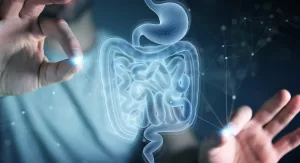Freeze drying is a process that removes moisture from food and liquids. For example, it’s possible to freeze dry mushrooms, insects or fruit and vegetables. Fresh is better! That’s where freeze drying comes in.
The freeze drying process preserves the taste, texture and nutritional value of food.
How does freeze drying mushrooms, insects or fruit and vegetables work?
The process of freeze drying starts by flash freezing the item to be dried. This is typically done by placing the item in a freezer; for example, our Xiros Mikro Freeze dryer at a temperature below -40 °C. Next, the machine applies a vacuum to the frozen item, which causes the moisture to sublimate, or go directly from a solid to a gas, bypassing the liquid state. The result is flash frozen product that’s better preserved and less likely to develop contaminants or other issues.
What are the benefits of freeze drying mushrooms, insects or fruit and vegetables?
The key benefits of freeze drying are that it preserves the taste, texture, and nutritional value of food better than other preservation methods such as canning or dehydration. Freeze dried food can be stored for years without refrigeration and can be rehydrated quickly by simply adding water. Besides that, freeze drying is much faster than conventional drying methods.
Freeze drying:
• Prevents contamination: Because freeze drying removes the need for a drying room, there is much less risk of issues like pest contamination. Freeze dryers also have the ability to control humidity levels and remove moisture that could promote the growth of mold or mildew.
• Saves money and space: Freeze dryers allow manufacturers to save on square footage and operational costs by eliminating the need for large drying rooms.
• Improves shelf life: When stored properly, freeze dried products can have a really long shelf life while retaining taste, texture and nutritional value… much longer than conventional drying methods.

Freeze drying with TIME as overall advantage
The entire freeze drying process takes 9–24 hours, while conventional drying can take several weeks to complete. Saving time is the factor that all above amazing advantages regarding freeze-drying share.
So, freeze drying can be a fast and effective way to quickly dry your mushrooms, insects or fruit and vegetables.
There are a few things to look for, when choosing a freeze dryer for your products. Consider the following before buying a freeze dryer:
• CE marking: indicates that a product has been assessed by the manufacturer and deemed to meet EU safety, health and environmental protection requirements. Make sure that any freeze dryer you purchase meets these standards to guarantee reliability and safety.
• Pricing: Depending on the size of the operation, freeze dryers can get expensive. At Holland Green Science, our Freeze dryers are both functional and affordable. Our Xiros Mikro freeze dryers are commonly used across the globe for both pharmaceutical and recreational purposes.
• Refrigerant: Make sure you use an environment friendly refrigerant. At Holland Green Science we use ozone friendly R290 natural refrigerant for our Xiros Mikro freeze fryer. It Protects the environment with minimal carbon footprint and ultra-low GWP (Greenhouse Warming Potential).
• Capacity: Freeze dryers range in size and temperature, so you’ll need to be sure to choose the right one for your facility. One of Holland Green Science’s newest freeze dryers, The Xiros Mikro, is perfect for those working with minimal space in their labs. Our Xiros Mikro can accommodate up to nine shelves, has an easy to load, low profile design and has a CE marking. This unit has been designed to run 24/7 with superior performance. When your production needs a bigger capacity, it’s common to get more Xiros Mikro Units to enlarge your capacity. This makes your production flexible, easily scalable, and the price of one big unit is often higher than multiple small freeze dryers (like our Xiros Mikro).
For more information about how we can help outfit your facility with a freeze dryer, check out the product page here
Or would you like to know more about the extraction of psilocybin out of mushrooms, read our blog













